 Curve to Curve
Curve to Curve
Adds a measurement showing the minimum and maximum deviation between two curves. This tool creates a locator showing the deviation between the two objects, labeling the minimum, maximum, mean, and displaying a deviation comb indicating the deviation across the length of the objects.
When selecting curves for measuring deviation, the selection order can make a difference in the curve-to-curve deviation results.
Objects in reference layers can be selected from within this tool.
Access this tool from the Locators palette:
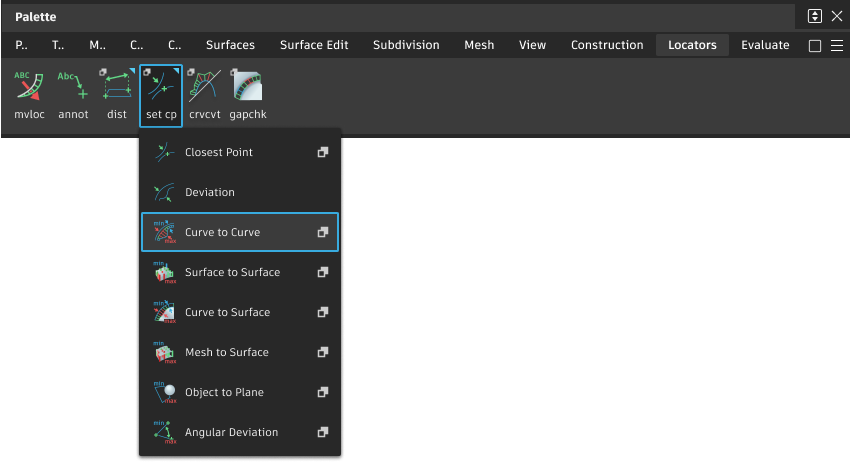
Curve to Curve Deviation Options
Length
True – The true measurement in 3D world space (such as seen in the Perspective window).
Projected – The measurement reports the deviation as it appears in the window in which the measurement was created.
Fix Projection Plane – For projected length only. Ensures the locator position and values are correct when you change the view and that the tool supports construction planes. The projection plane is saved in the wire file.
Show Min / Show Max / Show Mean / Show Comb
Check/uncheck the boxes to turn the different labels and comb on or off.
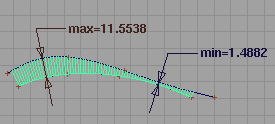
The labels can also be toggled on/off from the Information Window.
When Show Comb is on, you can right-click a comb sample in the viewport to display the deviation value at that point. See Display deviation values in the viewport.
Projected deviation locators include angled brackets around the values, for example, min=<2.1234> max=<7.981>.
Modify Range
Modify Range
Turn this on to specify the start and end points of the curvature comb.
Use this option to limit your deviation measurement to specific areas of the curves. Enter Start and End values or use the in-canvas manipulators to set the start and end points for the comb.
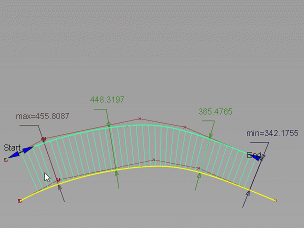
Threshold
Lets you set a value between the Min. Dist. and Max. Dist. range to trigger the threshold deviation display. When the deviation between two curves is higher than the set Threshold value, the locator turns from green to orange. This way, you can quickly see where the deviation between to curves exceeds the desired limits.
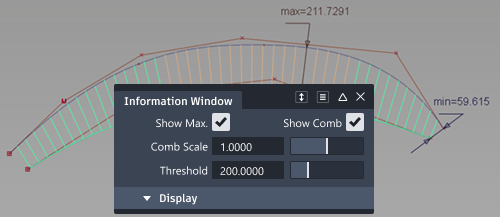
Curve to Curve workflows
Display deviation values in the viewport
Right-click a comb sample to display the deviation value at that point.
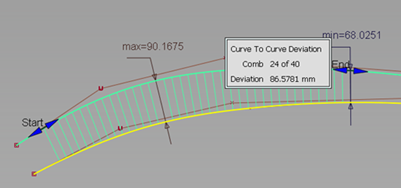
 click anywhere along the length of a curve to add another measurement point. Shift +
click anywhere along the length of a curve to add another measurement point. Shift +  on a measurement point to remove it.
on a measurement point to remove it. 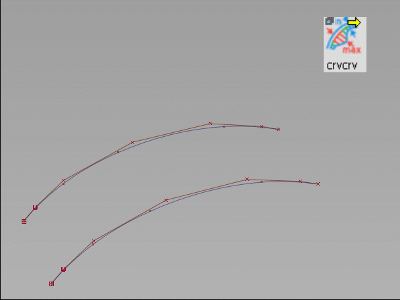
Display deviation values in the Deviation Table
Choose Windows > Deviation.
- Press on a row in the deviation table to highlight the corresponding position on the model with a red arrow.
- To check for values within a certain range, set the Gap Band Min and Gap Band Max options. Values within this range are highlighted in the deviation table window.
- To show only the values within this range, click Clip to Band.
- To reset the range to the defaults, click Reset Band.
- To save the information in a file, click Save. You can then import the data into, for example, a spreadsheet program for analysis.
Tip: The deviation table updates as you change the model.
